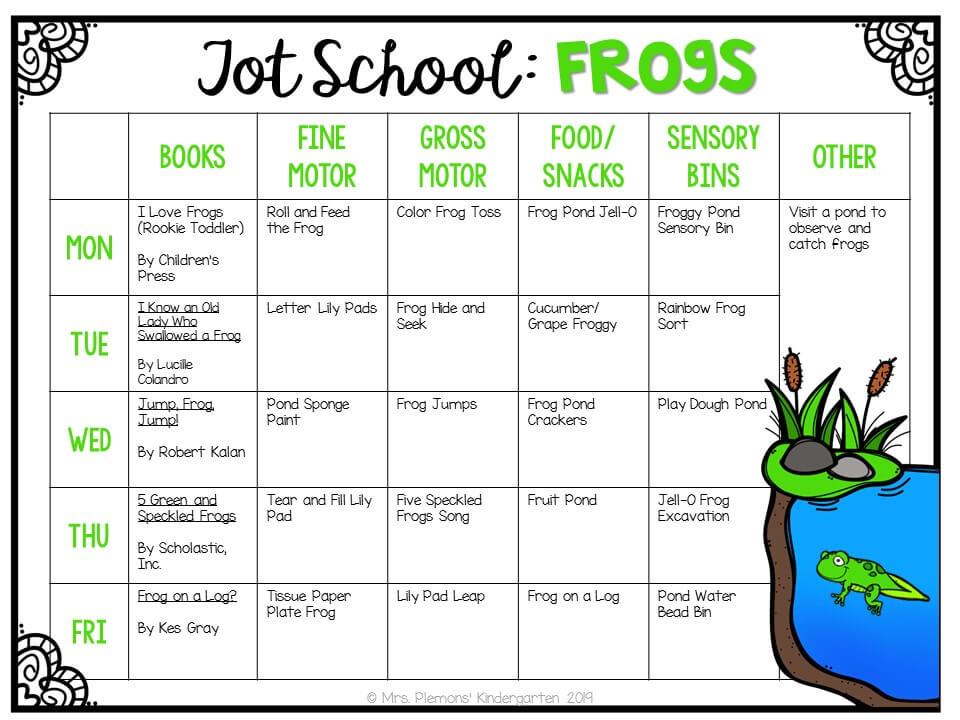There is something irrational about brand loyalists. Chicago Cubs have some of the most loyal fan following in the world�currently ranked #2 in the list of top ten fan bases in pro sports. This, despite the fact that the...
There is something irrational about brand loyalists.
Chicago Cubs have some of the most loyal fan following in the world�currently ranked #2 in the list of top ten fan bases in pro sports. This, despite the fact that the Cubs didn�t win a single Major League Baseball championship for 108 years until 2016.
In 2017, Apple paid $27 million in fines after it admitted to deliberately slowing down older versions of iPhones. Despite that and other expos� like the iPod�s Dirty Secret, every year Apple fans camp overnight outside Apple stores�sometimes sleeping on garbage bags and risk being arrested�just to be the first ones to get the latest versions of the iPhone.
Tesla is only 18-year-old, but the brand has a cult-like fan base for their cars unlike companies like Ford (118-year-old), GM (112-year-old), or Toyota (83-year-old).
What�s going on? In a world where competition between brands has literally turned into a space race and customer loyalty is fleeting�how do these brands draw crowds like the Pied Piper drove the mice?
Irrational it may be, but these are examples that represent the mysterious trend of �superconsumers�. Superconsumers are fanatics who buy based on emotions, don�t mind paying a premium, and flaunt their blind love for their favorite brands to the world.
And superconsumers might be the growth lever that can set your brand on a path of sustainable profit�even if you are in the B2B space.
Who are superconsumers?
Superconsumers as a concept was first introduced by Eddie Yoon in his book �Superconsumers: A Simple, Speedy, and Sustainable Path to Superior Growth.�
Superconsumers aren�t average consumers who hoard tissue papers in bulk or enterprise accounts that have large-scale software requirements In his book, Eddie defines superconsumers as �eclectic diehards� who are �obsessed about a specific brand, product, or category.�
For superconsumers, buying from a certain brand or category is a passion. They are extremely knowledgeable about the stuff they buy or own. And because they are emotionally driven about purchasing from a certain category or a brand, they spend considerably more than the average shopper.
It�s easy to confuse superconsumers with power users�buyers who are more advanced in their knowledge and usage of a product or a brand than the average user. But although power users have some overlapping traits with superconsumers, they are not the same.
Power users are more narrow in their love for a product or a brand, such as Apple iMac lovers versus Dell Inspiron users. In comparison with superconsumers, power users are one-trick ponies. Superconsumers�on the other hand�are category-level experts. Their interest ranges across products within the same category or it might extend across categories. For example, superconsumers are deeply entrenched with the latest and greatest in all operating system software�be it� Mac OS X, macOS Big Sur, Windows XP, or Windows 10.
Unlike power users, superconsumers� rich experience gives them a bigger, wide-angle lens of a brand or product category. They have a voracious appetite for knowledge. A super consumer of Tesla cars can tell you the good, the bad, and the ugly about Toyota Prius or Hyundai Ioniq Hybrid. An iPhone fanboy can give you a dozen reasons why a Samsung or� OnePlus 9 Pro is unsafe, bloated, and all-around worse than the iPhone 6.
And�God forbid�if you get into an argument with a Chicago Cubs superfan, they will give you a statistical comparison of the Cubs� last 20 performances with Man U, NYC Giants, or San Francisco 49ers. Or, maybe they will start a pub brawl just to prove that the Cubs� are the best baseball team to ever exist.
How to identify superconsumers?
Identifying the super consumers for your brand is about looking for quality over quantity�your job is not just to figure out why they buy but the origin story behind their purchase behavior.
But nobody is born as a super consumer�they learn to become �supers� somewhere along the way. Just like the jobs to be done (JTBD) framework, identifying supers is about tracing the trigger event that explains the real intent behind their purchase. JTBD is more transactional than the behaviors that superconsumers display. The distinction is�supers are far better at articulating not only what the job to be done is, but also their broader quest and range of categories that they hire to complete that quest.
Here�s an example that Eddie offers to better explain how an origin story triggers an average consumer into superconsumers.
Harvard Business Review (HBR) is one of the most expensive business magazines in the B2B management domain that comes out six times a year. And because the B2B domain is broad�HBR publishes scholarly articles on its website, sells books, runs a podcast, offers executive education, and has management case studies for people to buy.
HBR has a definitive base of super consumers who share a common pattern of behavior. HBR�s super consumers are people who were triggered to start reading the magazine after they were offered a new job, a promotion, or the responsibility to handle a big project. More often than not, these new managers have no idea about what they are supposed to do in their new roles. They are pretty good at keeping it a secret from others around them but are driven to �fake it till you make it�. And HBR is the dumbest way to learn how to do it�it�s their origin story behind reading HBR�s content regularly.
Having their back against the wall, they dive into HBR�s free content such as the podcast episodes and free articles on the website. Pretty soon, they start spending quite a bit of money and time in the analogous categories such as buying books and consuming the case studies from HBR in depth�to the point where they earn enough expertise to apply the newfound knowledge in their new role. And because they are putting an extraordinary amount of effort into learning, they end up excelling at the job that was handed to them.
Had it not been for HBR�s top-notch content, the fate of many HBR�s super consumers would have ended poorly. This is why super consumers are rarely rational in their buying behavior. They are emotionally invested in a category because it�s part of their origin story and a trigger event that probably changed their lives.
Superconsumers stay loyal to a brand category for life and evangelize it because it turned the odds in their favor even when they had pushed all the chips into the center of the table. From the business perspective, brands should actively look out for such trigger events and origin stories that can help them identify superconsumers.
4 ways to leverage superconsumers to drive growth
Superconsumers represent just 10% of a brand�s customers, but they drive anywhere between 30-70% of sales. And although regular consumers dwarf supers in size and volume, superconsumers account for a proportionately bigger share of profit and key insights that are critical to your brand�s profitable growth.
All this to say, superconsumers hold leverage points that can help your brand grow. Here are a few ways to use super consumers to grow your business.
1. Find your super consumers
With the traits mentioned above, it�s easy to identify super consumers�but finding them is another task altogether. Superconsumers are hidden in plain sight�often intermingled with average consumers. The best way to look for your brand�s super consumers is to scour through your own data. This could mean taking a thorough stock of your product dashboard, social media communities, or your sales pipeline.
Here�s an example. During his research for the book, Eddie found that consumers who tend to buy a lot of vitamin pills also tend to spend more on life insurance premiums than the average buyer. They are also the super consumers who would buy a standby generator and possess about 3-4 refrigerators and freezers because they usually over-index to hedge against terrible future outcomes. These are consumers who like to be prepared for the COVID-induced lockdowns, zombie apocalypses, or end of the world scenarios.
Analyzing your business data can point you to your brand�s superconsumers. Analyze the data thoroughly to find your tentative superconsumers, unearth their origin stories, trace their trigger events, and understand their different use cases. More often than not, these are people whose buying logic is rooted in emotions.
2. Engage with them
Superconsumers are highly engaged with the product or the category your brand operates in. Once you find and identify your superconsumers, you have to build relationships with them. When you engage with them in close proximity, superconsumers will reveal data and insights that you can mine to maximize your product�s potential or drive innovation.
Superconsumers are one of the best sources of innovation. They are known to use a product in ways that defy the normal use cases, which often lead to accidental discoveries with huge market potential. They use a product or category to handle multiple jobs that are outright irrational�because they are emotional and/or aspirational in their quest.
Rogaine, an FDA-approved medicine to prevent hair loss, was a high blood pressure medicine to start with. Slack was originally meant to be Glitch�a video game concept�before Stewart Butterfield and co. turned their failed venture into a communication platform. Twitter was Odeo�a platform for people to publish, find, and subscribe to their favorite podcasts�before its founder decided to pivot into the micro-blogging space.
Talking directly with the super consumers offers you invaluable insights and ideas. However, don�t just restrict your search to your best customers. Somewhere deep in the data, there is a hidden correlation between the people who are already deeply engaged with an unrelated product and people who would buy your product�all stitched together under a singular and powerful emotional benefit. Widen your pool of interactions with users outside of your brand or the category you operate in to tease out intriguing product usage.
3. Test new products
With superconsumers, you can spot powerful trends very early. That�s because superconsumers exhaust a product or a category way before the average Joes. If you have a new product or a feature, testing them on your super consumers can help you determine its success or the lack of it.
Superconsumers also enjoy strong clout among the average users. They write blogs, make YouTube videos, and influence other people�s opinions about a product and category. If you can satisfy your super consumers with the latest feature rollout, they will come back for more or will tell others in their network about it. Superconsumers are the best channel to grow your word-of-mouth marketing.
It�s worth investing time to satisfy super consumers because they are not price-sensitive and are willing to passionately evangelize your brand to the world.
4. Grow a community of supers
Eddie�s theory about super consumers closely resembles what other business experts have to say about building a band of vocal fans.
In his timeless blog 1,000 True Fans, Kevin Kelly explains how solo entrepreneurs can sustain a wildly profitable business by just building a community of 1000 diehard fans. In their book Fanocracy, authors Reiko Scott and David Meerman Scott offer powerful anecdotes about how radically devoted customers can be the most powerful marketing force in the world.
The point is�the power of super consumers as a community can impact your growth in orders of magnitude that are much higher than super consumers dispersed in individual capacities. As a brand, you can�t simply leave such an opportunity on the table. It�s your brand�s responsibility to shepherd the supers into well-moderated communities�like the ones Mozilla or HubSpot have�to let them exchange ideas and help each other out.
Creating interactive communities of superfans lets you embrace your super consumers as fellow travelers in your path to growth. You might have to walk halfway to solve their problems and help them deepen their expertise, but the eventual outcome will always favor your brand. That�s because superconsumers� passion for a brand or category is often very contagious�it will help you attract more consumers and super consumers to your business.
5. Build your organization culture around it
Superconsumer is an organic construct, but the onus of creating a fan-friendly business environment is always on your brand. This often begins with a top-down organizational culture that is thoughtfully aggressive in your growth and radically generous in providing plenty of value to your customers.
Being thoughtfully aggressive doesn�t just mean being aggressive with an offer. Rather, it�s about walking in your customers� shoes and making each of their interactions with your brand a high-ROI activity. If you see a customer with a problem that you think can help with, pitch them the value of your service without any obligation even if it means offering a portion of your service for free. Offer them a bite-size service that�s relevant to them, but not overwhelming or time-consuming.
On the other hand, being radically generous can be a great growth strategy if you can offer an overwhelming amount of generosity to your customers. Radical generosity is less like offering your customers a half-used bottle of beer and more like Costco handing out free samples of high-quality food products that helps them convert the right set of audience and alienate the rest. The value that you offer should be a radical modifier that bowls them over in a way that�s sustainable for them or doesn�t burn out your resources.
Being radically generous and thoughtfully aggressive can help you cultivate super consumers and find unparalleled growth opportunities. But the prerequisite is�you first have to align your teams and get your company on board about the idea.
Superconsumers can lead you to profitable category design
Brands that aspire to create a new category or dominate their product category can get a strong tailwind if they can identify and leverage super consumers to grow and market themselves. You won�t know how a new product or category will perform unless you test it out by letting consumers respond to it. Creating super consumers is a rich opportunity for your brand to test your product ideas�only if you are thoughtfully aggressive and radically generous in solving your customers� problems.
The post Why super consumers are the next marketing frontier: Eddie Yoon appeared first on Yaagneshwaran Ganesh.









